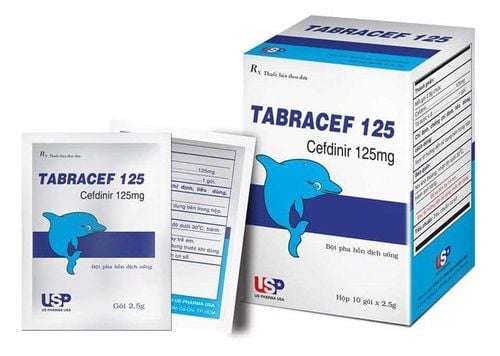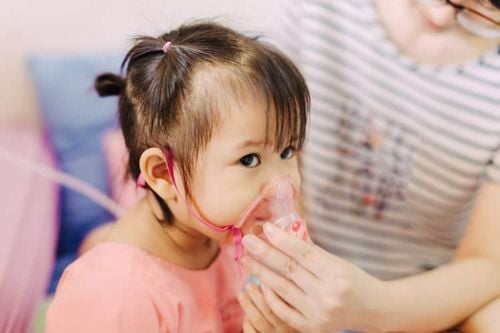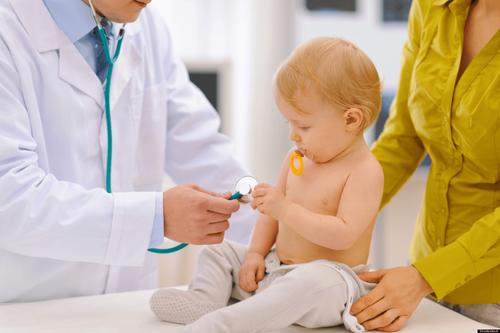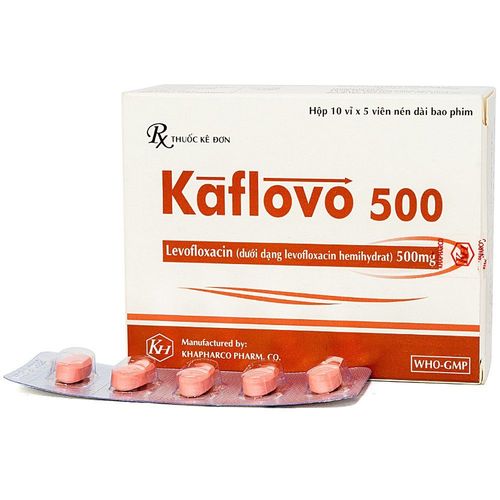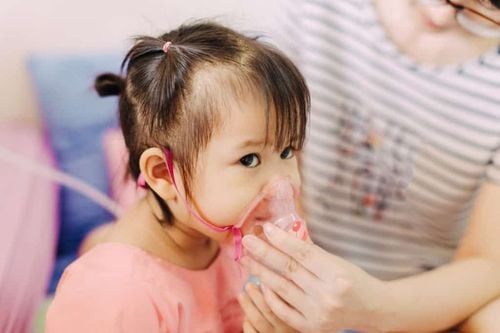This is an automatically translated article.
The article is professionally consulted by Master, Doctor Nguyen Huy Nhat - Department of Medical Examination & Internal Medicine - Vinmec Danang International General Hospital.
Aspiration pneumonia is an infection of the lungs when a foreign body from the mouth or stomach enters the lungs. Common symptoms of aspiration pneumonia are fever and cough, which is relatively acute.
1. What is aspiration pneumonia?
Aspiration pneumonia is a condition in which a large amount of foreign body is inhaled from the mouth, pharynx or stomach into the lungs. These foreign bodies can be food, saliva, chemicals, gastric acid, vomit, etc., when entering the lungs, will cause an inflammatory reaction and create a premise for bacteria to invade. Aspiration pneumonia is divided into two main groups:Pneumonia with lesions caused by reflux of gastric juice into the lungs (Mendelson's syndrome). The extent of damage depends on the amount of gastric acid entering the lungs, the pH, and the nature of the fluid. Pneumonia caused by aspiration of food, oropharyngeal secretions, .. These substances, when entering the lungs, can cause lung infections and damage to the lung parenchyma due to containing a large amount of pathogenic bacteria.
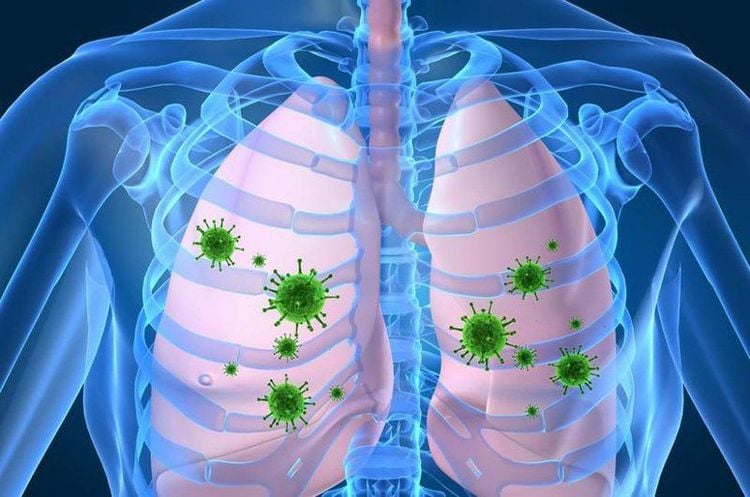
Viêm phổi hít là phổi bị vi khuẩn xâm nhập
People with neuromuscular damage such as cerebral hemorrhage, infarction Brain disease, Parkinson's disease, multiple myeloma, amyotrophic lateral sclerosis, myasthenia gravis, dementia,... People with diseases such as enlarged thyroid gland, Zenker's diverticulum, cervical spondylosis, cancer ,... Hospitalized people can perform medical interventions such as: intubation, nasogastric tube, mechanical ventilation... Studies have shown that the lumen of the endotracheal tube after placement will quickly covered with a biofilm that can contain millions of bacteria/cm2. Microbial growth in endotracheal tubes and trachea is caused by bacteria entering and growing in the trachea from secretions deposited above the cuff of the endotracheal tube. In addition, nasogastric tube placement increases parasitic microorganisms in the nasopharynx, causing reflux of gastric juice, bacteria from the stomach through the tube to the upper respiratory tract. People with diseases such as gastrointestinal obstruction, gastroesophageal reflux, pyloric stenosis, small jaw defects, large tongue defects, gingivitis, tooth decay, etc. Due to fetal distress, the fetus is stimulated by hypoxia. Parasympathetic nervous system expels meconium into amniotic fluid, the fetus inhales meconium leading to respiratory failure. Children who were born prematurely, have Down's syndrome or have problems swallowing due to cleft lip, cleft palate, esophageal malformation. Children who have a habit of running, jumping, playing while eating can lead to the risk of inhaling substances from saliva, food, sputum, etc. into the lungs. Patients are at risk of aspiration pneumonia during induction of anesthesia if the patient has an emergency surgery without time to prepare, the stomach is full of food and gastric juice.
Trắc nghiệm: Làm thế nào để có một lá phổi khỏe mạnh?
Để nhận biết phổi của bạn có thật sự khỏe mạnh hay không và làm cách nào để có một lá phổi khỏe mạnh, bạn có thể thực hiện bài trắc nghiệm sau đây.2. Symptoms of aspiration pneumonia
Patients with aspiration pneumonia will have common symptoms such as:Cough and choking often appear after swallowing saliva and eating. Patients wheeze, shortness of breath, cyanosis, drop in blood pressure, pulmonary edema,... After the secretions from the pharynx, respiratory tract, etc. enter the lungs, there will be symptoms of infection such as coughing and expectoration. yellow sputum, high fever, chest pain, blood tests show elevated white blood cells, procalcitonin, and CRP. Pulmonary examination revealed pneumothorax, dull percussion, crackles, and pleural rub. The severity of aspiration pneumonia varies, symptoms can be very mild due to poor immune response in the elderly, or can be very severe if aspiration pneumonia leads to complications of abscess pneumonia, Severe respiratory failure, pneumonia with septic shock,... In severe cases, the patient quickly has symptoms of cyanosis, stridor, glottis spasm, if not promptly the patient may die. .

Triệu chứng ban đầu của viêm phổi hít có thể là ho và sặc thường xuyên
3. How to treat aspiration pneumonia?
In the case of aspiration pneumonia due to reflux of stomach acid into the lungs, the patient has impaired consciousness, cannot breathe on his own, must perform pharyngeal aspiration, intubation, and conduct bronchoscopy. During bronchoscopy, it is necessary to ensure adequate oxygen supply to the patient. Do not use antibiotics to prevent infection because it can cause drug resistance, but if after 48 hours the pneumonia does not improve, antibiotics must be used. Should use broad-spectrum antibiotics until the results of culture according to the antibiogram, then use antibiotics according to the antibiogram.For patients with aspiration pneumonia caused by foreign bodies falling into the lungs causing infection, they must be treated with antibiotics. Clinically, the most commonly used antibiotic combination is a combination of a beta-lactam antibiotic and an aminoside or quinolone antibiotic. For patients to use antipyretic, anti-inflammatory, expectorant, rehydration, electrolyte. Ensure adequate nutrition for the patient.
Treatment of swallowing rehabilitation in patients with swallowing dysfunction by methods such as: compensatory support when swallowing, practice while swallowing, exercise to strengthen the function of chewing-swallowing muscles . These therapies help reduce food stagnation in the mouth and reduce the chance of food choking into the lungs. Caregivers of patients with swallowing disorders should pay attention to find suitable foods for the patient, if the patient has difficulty swallowing solid foods, switch to a softer diet. If you switch to a solid diet, you should rest for 30 minutes before eating. When eating, you should focus. Do not eat while talking, watching TV, reading books. Need to know first aid actions when the patient is choking while eating.
Doctor Nguyen Huy Nhat has many years of experience in the field of respiratory disease treatment at Hue Central Hospital, Hoan My General Hospital, .. before being a doctor of General Internal Medicine Department of General Hospital. Vinmec Da Nang International
To register for examination and treatment at Vinmec International General Hospital, you can contact Vinmec Health System nationwide, or register online HERE.
MORE:
When does a child with pneumonia need to be hospitalized? Is pneumonia in babies dangerous? Signs of pneumonia in babies






